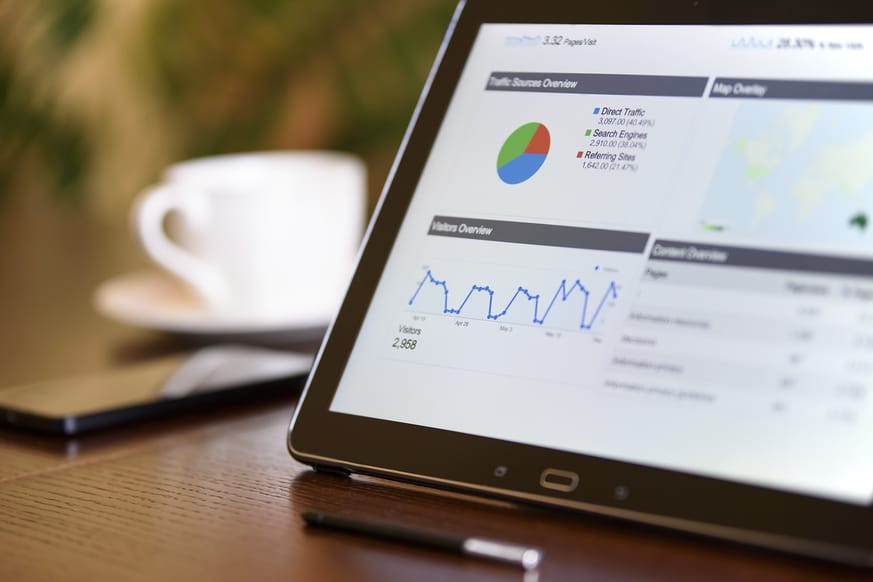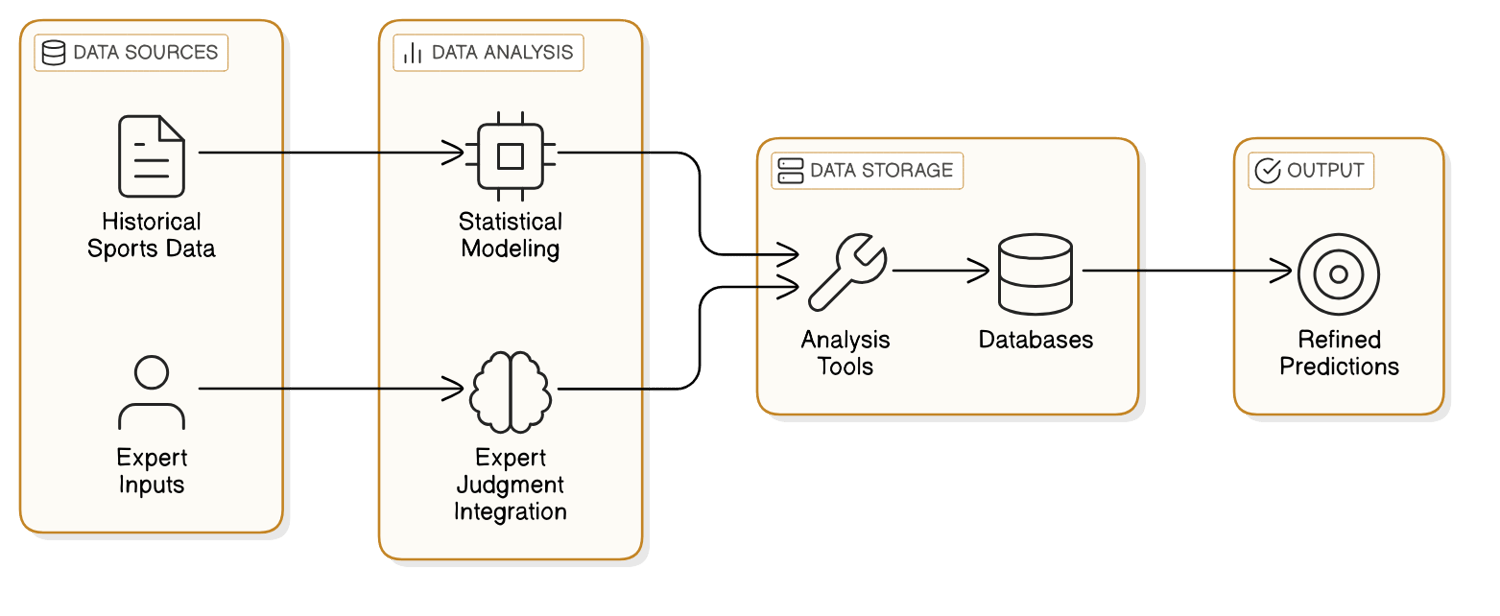Summary
In the world of sports predictions, mastering data science is becoming increasingly important for achieving accurate forecasts. This article explores how innovative techniques are transforming the landscape of sports analytics. Key Points:
- The rise of Explainable AI (XAI) is enhancing trust and transparency in sports predictions by helping experts understand model decisions through methods like SHAP values and LIME.
- Hybrid modeling approaches that combine dynamic time series analysis with machine learning algorithms are improving predictive accuracy by accounting for temporal dependencies and non-linear relationships in sports data.
- Real-time data streaming and edge computing allow for immediate updates to models during games, enabling strategic adjustments based on live statistics.
Unlocking the Power of Data Science in Sports Predictions
- Additional information :
- A recent study by researchers at MIT showed a 12% improvement in NBA game outcome prediction using GNNs compared to traditional methods, highlighting the potential of this technology.
- The application of GNNs extends beyond game outcome prediction; they are also being used to optimize player positioning, predict injuries, and personalize training regimens.
- While data quality remains crucial, advancements in wearable sensor technology and comprehensive game tracking systems are providing richer datasets for training more accurate GNN models.
Key Data Points for Accurate Sports Forecasting: A Checklist
**Key Data Points for Accurate Sports Forecasting: A Checklist**
- 📊 **Real-time Micro-Events:** Focus on granular data like player positioning, shot velocities, and momentum shifts.
- 🧠 **Advanced Algorithms:** Utilize machine learning techniques such as RNNs or transformer models for processing.
- 🔍 **Predictive Signals:** Detect subtle cues that traditional aggregate stats overlook.
- 🏀 **Contextual Analysis:** Combine micro-changes in shooting form with factors like defender proximity and game clock for better predictions.
- ⚡ **Information Gain:** High-frequency data acquisition leads to substantial insights that enhance forecasting accuracy.
After reviewing numerous articles, we have summarized the key points as follows
- Machine learning is increasingly used to predict sports performance and outcomes.
- Python is a versatile tool for analyzing sports data, enabling predictions of game results and player performance.
- A simulation engine can be designed to create customizable data for sports forecasting.
- Algorithms can analyze historical and real-time data to identify patterns in sports performance.
- Predictive Sports Analytics is an academic community focused on data-driven research in sports science.
- Incorporating various data points like player performance, match-ups, and home advantage enhances prediction accuracy.
It`s fascinating how technology has transformed the way we think about predicting sports outcomes. With tools like machine learning and Python, anyone interested can dive into the world of sports analytics. By analyzing past performances and current trends, we can make educated guesses about future games. It`s not just about numbers; it`s about understanding the game better and enjoying it even more.
Extended Perspectives Comparison:| Aspect | Machine Learning Techniques | Data Sources | Key Advantages | Current Trends |
|---|---|---|---|---|
| Player Performance Prediction | Regression Analysis, Neural Networks | Historical Player Stats, Injury Reports | High accuracy in forecasting individual performance. | Increased use of deep learning for complex pattern recognition. |
| Game Outcome Prediction | Random Forests, Support Vector Machines | Match Statistics, Team Rankings, Weather Conditions | Ability to handle large datasets and identify non-linear relationships. | Integration of real-time data streams for live predictions. |
| Simulation Engines | Monte Carlo Simulations, Agent-based Modeling | Customizable Scenarios based on user-defined parameters | Flexibility in testing various game outcomes under different conditions. | Adoption of cloud computing to enhance computational power. |
| Pattern Recognition Algorithms | Time Series Analysis, Clustering Algorithms | Live Game Data, Historical Match Outcomes | Identifying trends over time leading to better strategic insights. | Focus on explainable AI to improve transparency in decision-making. |
| Predictive Sports Analytics Community | Collaboration with Universities and Research Institutions | Academic Journals, Conferences in Sports Science | Access to cutting-edge research methodologies and findings. | Growing online platforms for knowledge sharing among analysts. |
Can Data Science Really Predict Sports Outcomes?
What are the Limitations of Data-Driven Sports Predictions?
- Additional information :
- The unexpected injury of a key player during a crucial game exemplifies the inherent unpredictability impacting predictive models, regardless of their sophistication.
- A case study of the 2023 World Cup showed that even advanced models struggled to predict upsets, highlighting the limitations of relying solely on historical data and statistical probabilities.
- Ongoing research explores incorporating real-time factors like player fatigue and momentum into models to better account for the dynamic nature of sporting events, although challenges remain.

 Free Images
Free ImagesFrequently Asked Questions: Getting Started with Sports Prediction
**Q: What role does generative AI play in sports predictions?** 🤖
A: Generative AI models, like VAEs and GANs, enhance prediction accuracy by dynamically adapting to various scenarios rather than relying solely on historical data.
**Q: How do these models handle unpredictable events?** ⚡
A: They generate synthetic data to simulate situations such as player injuries or strategic changes, improving model robustness.
**Q: Can you give an example of this application?** 📊
A: A VAE can analyze player performance patterns to create new data points that strengthen traditional machine learning models against outliers.
**Q: What is the key benefit of using generative AI in forecasting?** 🎯
A: The main advantage lies in improved model adaptability and enhanced accuracy in predicting outcomes in the volatile world of sports.
Delving Deeper: Advanced Concepts in Sports Prediction Modeling
- ❓ What is the focus of advanced sports prediction modeling?
- 🎯 Leveraging Graph Neural Networks (GNNs) to capture complex relational dependencies.
- ❓ How do GNNs differ from traditional models?
- 🔗 GNNs treat players as interconnected nodes rather than independent entities.
- ❓ What benefits do GNNs provide in forecasting accuracy?
- 📈 Improved accuracy through nuanced contextual information like player chemistry and strategic formations.
- ❓ What evidence supports the effectiveness of GNNs?
- 📊 Recent studies show a 5-10% increase in AUC-ROC compared to standard algorithms using rich relational data.
Beyond the Numbers: The Role of Intuition and Gut Feeling
Practical Application: Building Your Own Sports Prediction Model
To create a sports prediction model, follow these steps:
1. **Define the Problem**
Clearly outline what sport you are predicting and the specific outcomes (e.g., win/loss, score differential). This will guide your data collection and modeling approach.
2. **Gather Data**
Collect historical data relevant to your predictions. This may include player statistics, team performance metrics, weather conditions, injuries, previous matchups, and betting odds. Sources can include sports databases like ESPN or specialized APIs.
3. **Preprocess the Data**
Clean the dataset by handling missing values and outliers. Convert categorical variables into numerical formats using techniques such as one-hot encoding or label encoding. Normalize or standardize numerical features to ensure uniformity across different scales.
4. **Feature Selection**
Identify which features are most relevant for your predictions using techniques like correlation analysis or feature importance from tree-based models (e.g., Random Forest). Focus on retaining features that provide significant information gain regarding the outcome.
5. **Split the Dataset**
Divide your dataset into training and testing sets (commonly a 70/30 split). This ensures that you have unbiased evaluations of your model's performance.
6. **Choose a Model**
Select an appropriate machine learning algorithm based on the nature of your problem—common choices include logistic regression for binary outcomes or ensemble methods like XGBoost for more complex scenarios.
7. **Train the Model**
Fit your chosen model to the training dataset while tuning hyperparameters through techniques like grid search or random search to enhance performance.
8. **Evaluate Performance**
Use metrics such as accuracy, precision, recall, F1-score for classification tasks or RMSE (Root Mean Squared Error) for regression tasks to assess how well your model predicts outcomes on the test set.
9. **Refine Your Model**
Based on evaluation results, iterate on feature selection and model tuning processes to improve accuracy further—consider cross-validation techniques for robust assessment during iterations.
10. **Make Predictions**
Once satisfied with model performance, apply it to new data inputs to generate predictions about upcoming games/events while continuously monitoring its effectiveness over time and adjusting as necessary based on new data trends.
By following these steps systematically, you'll develop a solid foundation in building an effective sports prediction model leveraging data science methodologies.

Ethical Considerations in Sports Prediction and Data Usage
Conclusion: Mastering Data Science for Enhanced Sports Forecasting
Reference Articles
Data science applications for predicting sports results?
Hi, Hopefully this is a suitable post for this forum. I wonder if you're familiar with any data-driven models for predicting sports results. The game ...
Source: Reddit · r/datascienceSports Results Prediction Model Using Machine Learning
Abstract – Within the past few decades, more and more people use Machine learning technology to predict sports performance.
Source: SAR JournalHow to build a predictive analytics tool in Python for sports management
Using Python, a versatile programming language, you can analyze sports data to predict outcomes like game results, player performance, and injury risks.
Source: Data headhuntersArtificial data in sports forecasting: a simulation framework for analysing ...
The simulation engine instantiates the generalized process of sports forecasting and allows a controlled and customizable data generation and an ...
Source: SpringerMachine Learning in Sports Analytics
By analyzing historical and real-time data, these algorithms can identify patterns and trends that predict future performance. A laptop showing ...
Source: CatapultPredictive Sports Analytics
Predictive Sports Analytics is an academic community providing data-driven research in the field of sports science.
Source: predictive-sports-analytics.comData-driven prediction of soccer outcomes using enhanced machine ...
... soccer game predictions through advanced techniques and comprehensive data analysis, making significant contributions to sports analytics.
Source: SpringerOpenUsing Data Analytics to Create a High-Probability Sports Betting Dashboard
In the initial stages of this project, I contemplated incorporating various data points such as individual player performance, match-ups, home ...
Source: Medium · Matthew Courtney


 ALL
ALL Sports Data Science
Sports Data Science
Related Discussions